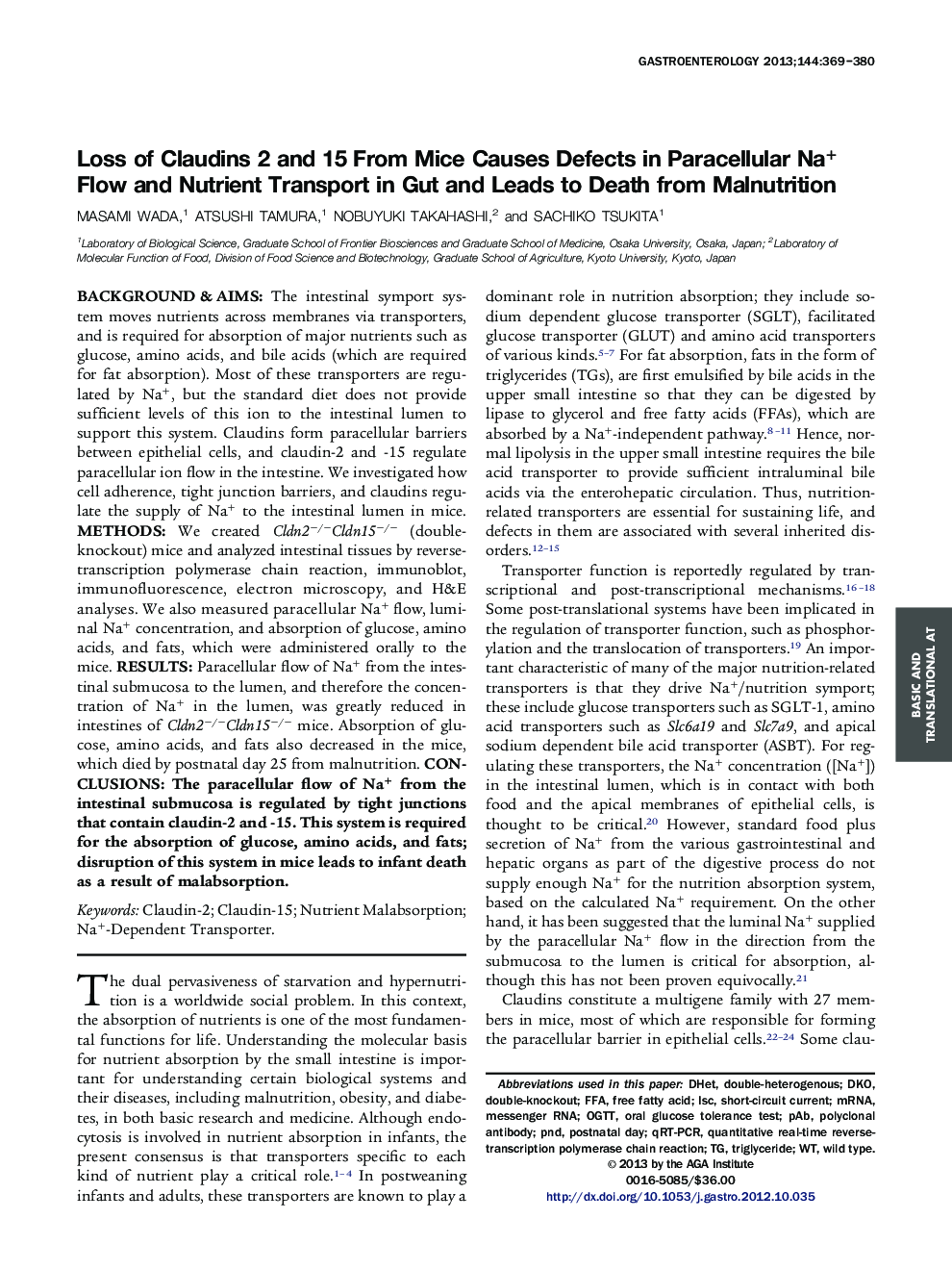| Article ID | Journal | Published Year | Pages | File Type |
|---|---|---|---|---|
| 3293269 | Gastroenterology | 2013 | 12 Pages |
Background & AimsThe intestinal symport system moves nutrients across membranes via transporters, and is required for absorption of major nutrients such as glucose, amino acids, and bile acids (which are required for fat absorption). Most of these transporters are regulated by Na+, but the standard diet does not provide sufficient levels of this ion to the intestinal lumen to support this system. Claudins form paracellular barriers between epithelial cells, and claudin-2 and -15 regulate paracellular ion flow in the intestine. We investigated how cell adherence, tight junction barriers, and claudins regulate the supply of Na+ to the intestinal lumen in mice.MethodsWe created Cldn2−/−Cldn15−/− (double-knockout) mice and analyzed intestinal tissues by reverse-transcription polymerase chain reaction, immunoblot, immunofluorescence, electron microscopy, and H&E analyses. We also measured paracellular Na+ flow, luminal Na+ concentration, and absorption of glucose, amino acids, and fats, which were administered orally to the mice.ResultsParacellular flow of Na+ from the intestinal submucosa to the lumen, and therefore the concentration of Na+ in the lumen, was greatly reduced in intestines of Cldn2−/−Cldn15−/− mice. Absorption of glucose, amino acids, and fats also decreased in the mice, which died by postnatal day 25 from malnutrition.ConclusionsThe paracellular flow of Na+ from the intestinal submucosa is regulated by tight junctions that contain claudin-2 and -15. This system is required for the absorption of glucose, amino acids, and fats; disruption of this system in mice leads to infant death as a result of malabsorption.
